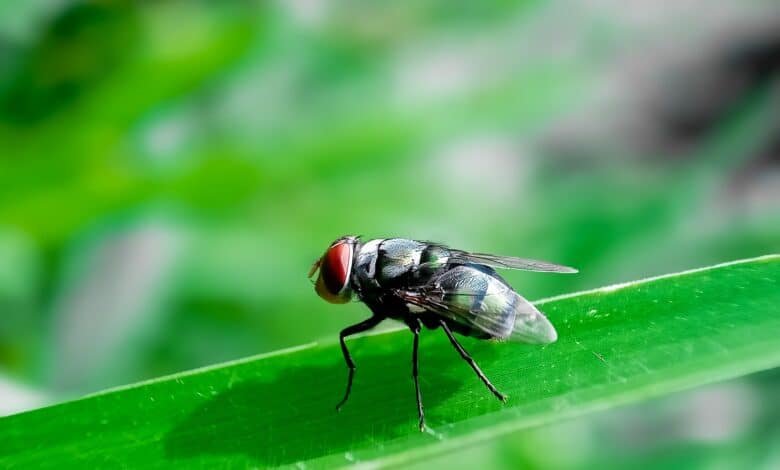The United States prohibits imports of cattle from Mexico due to the spread of pests eaten flesh

All imports of living cattle, horses and bison from the southern border were prohibited Due to the propagation of an eating pest of flesh in Mexico, the American Department of Agriculture (USDA) said on Sunday.
“The protection of our animals and the security of the food supply of our country is a problem of national security of the utmost importance,” said USDA secretary Brooke Rollins, in a press release.

Cochliomyia hominivorax, the new world fly, is a kind of parasitic fly which is well known for the way in which its larvae (asticots) eat living tissue.
Ramdan Fatoni / Getty Images
The secretary cited New World Screwworm (NWS), a parasitic fly, as a reason for the suspension of imports. The name refers to the way asticots are shot in the fabric of animals with their sharp mouth hooks, causing significant damage and often causing death.
Panama has seen NWS infections among cattle go from an average of 25 cases per year to more than 6,500 in 2023. Since then, the disease has spread further north, breaking a previously established barrier which contained the pest in South America for decades, the USDA said.
Infections have been detected in Costa Rica, Nicaragua, Honduras, Guatemala, Salvador and Belize.

The cattle are detained in a corral before being exported to the United States through the border post of Jeronimo-Santa Teresa after the Secretary of American Agriculture Brooke Rollins announced an agreement with Mexico on the management of the new Vipe Ver, following a threat to stop the imports of Mexican cattle due to the epidemic, in the Chihuahua Livestock Union Facility, outside Ciudad Juarez, Mexico City 29.
Jose Luis Gonzalez / Reuters, file
More recently, a case was reported in Mexico at the end of last year, which also closed the border for living animal trade. Imports resumed earlier this year after an agreement between the United States and Mexico to alleviate the threat of the disease.
The propagation and continuous NWS threat led to the current closure, which will continue on one basis month a month, “until a significant containment window is obtained,” said the USDA. The disease has recently been detected in farms remote about 700 miles from the American border.
The eradication of the disease is possible thanks to a technique in which male screw flies are sterilized and then released in the environment to mate with women until the population goes out. This process was used to rid the United States of NWS in the 1960s.
Eradication efforts have given estimated economic advantages of Almost $ 800 million a year For American cattle producers in 1996, with around 2.8 billion dollars for the wider economy, according to the USDA.

Agriculture Secretary Brooke Rollins speaks to the media outside the White House, May 5, 2025.
Evelyn Hockstein / Reuters, file
US agricultural officials strive to release sterile flies both by air and earth along certain parts of southern Mexico and in other regions of Central America.
“Once we note an increase in surveillance and eradication efforts, and the positive results of these actions, we remain determined to open the border for livestock trade,” said Rollins. “It is not a question of Mexico policy or punishment, but rather food security and animals.”





